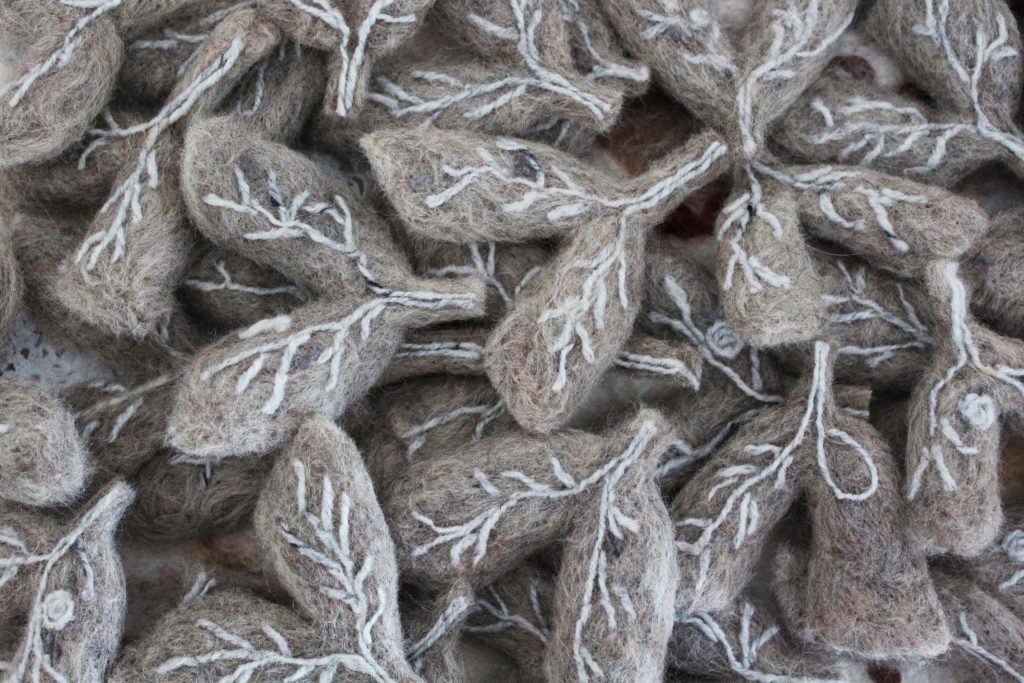“Where There’s Dust There’s Danger” (2014) takes the form of tiny needle felted lungs made from wool and household dust impregnated with the extracted DNA of killed Mycobacterium tuberculosis (TB). The organisms have been rendered sterile using a validated process used in whole genome sequencing of TB. The lungs show various stages of the disease and forms of treatment.

On 24th March 1882, pioneering microbiologist, Robert Koch made the ground breaking announcement that he had discovered the cause of Tuberculosis. It was a tiny, slow growing bacterium, that was given the scientific name Mycobacterium tuberculosis.
The importance of this discovery cannot be downplayed. It is the earliest disease identified in mankind, found dating back to the Neolithic era. Later in around 460 BCE Hippocrates identified ‘phthisis’ (an old name for pulmonary tuberculosis) as the most widespread disease of the times, but the cause of the condition has always been shrouded in myth and superstition, ‘consumption’ (another old name) often being associated with vampires.
Knowing the cause of the disease was a huge step, but understanding how it was spread was another matter. Today we know that the primary method of transmitting the disease is through an infected person coughing. This aerosolises droplets of exactly the correct size needed for them to be inhaled by an uninfected person. It is not an easy disease to catch and usually prolonged exposure is needed.
Around the turn of the 20th Century it was widely believed that household dust was one of the main transmission vectors. Sufferers would cough up sputum from their lungs and spit it out. The sputum would dry and become mixed with dust. But it seems very unlikely that the disease could be spread effectively in this manner, as the particles are far too large.
In 1902 the advice of the National Society for the Prevention of Consumption was:
“Rooms, passages, and staircases must be kept free from dust. Where there is dust there is danger. Do not chase dust about, nor stir it up. Use damp dusters. Use plenty of tea-leaves or damp sawdust when sweeping the floor. Boil the dusters. Burn the tea-leaves and sawdust.”
Modern whole genome sequencing research is rapidly revealing so much more about the transmission and spread of the disease than has previously been possible, but there is still so much more to learn.
The work is part of Anna Dumitriu’s project “The Romantic Disease” investigates mankind’s strange relationship with the Tuberculosis, from early superstitions about the disease, through the development of antibiotics, to the latest research into whole genome sequencing of bacteria. Supported by the Wellcome Trust.
